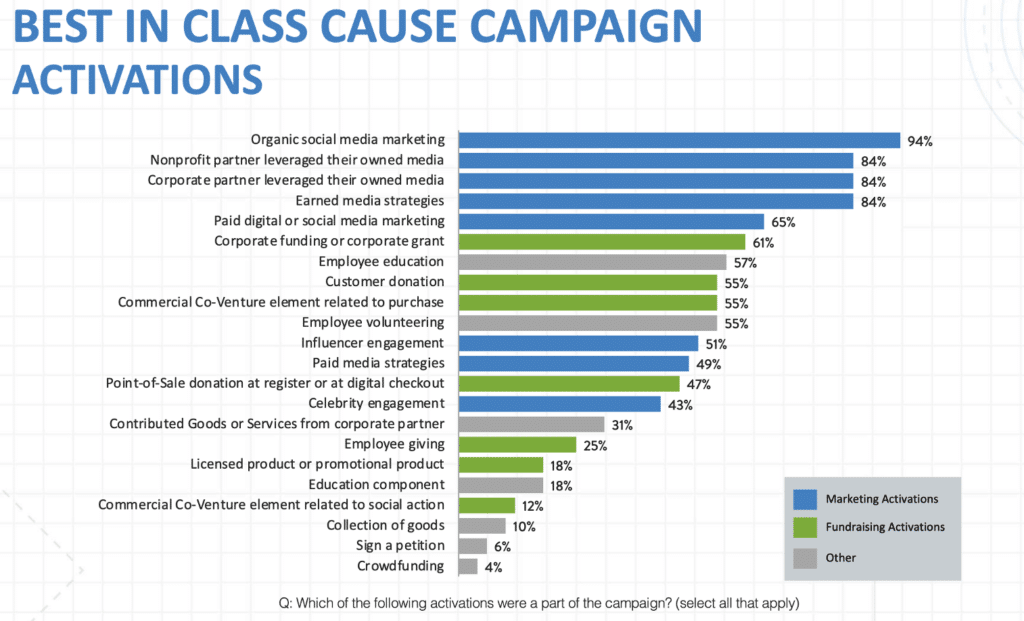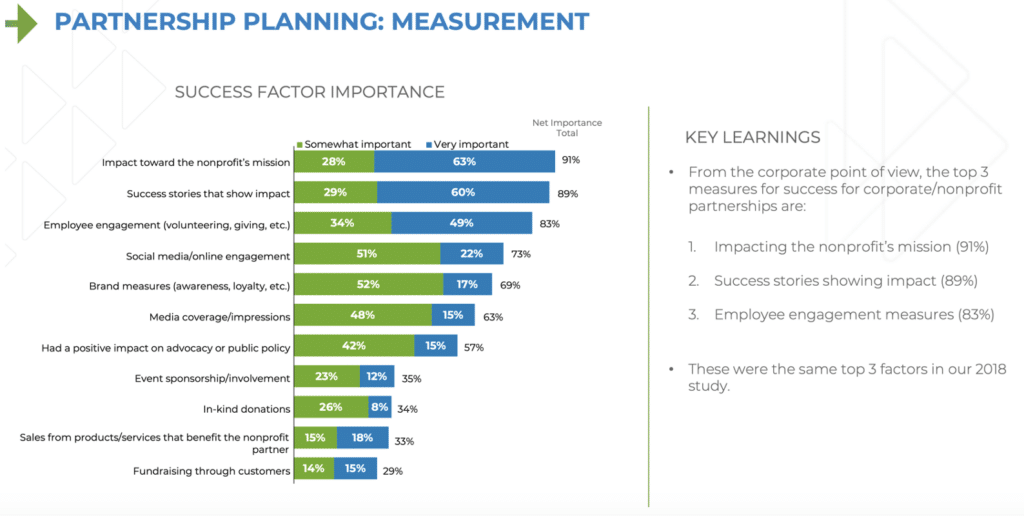By: Mollye Rhea
We began this series with strategies for identifying prospective corporate partners to amplify your resources and advance your mission. In part two, we discussed how to ensure a successful first meeting with a potential corporate partner and follow up after the initial conversation. Now, let’s focus on how to close the deal and turn your prospects into long-term partners.
Continue Cultivation
Continuing to share regular updates on your organization’s activities and recent successes that we discussed in part two, shouldn’t stop after a few weeks. In fact, our latest research suggests closing new partners most often takes 11-20 touchpoints with over 20% requiring up to 30 touchpoints. This means developing consistent, authentic touchpoints over time.
Connect on LinkedIn, share information and updates from your organization, tell them about upcoming events, point out press you’ve seen about their company or brand, and send articles of relevant cause promtions from their industry sector. Proactive value-based communication and interactions will help develop the relationship and continue building trust.
“We remained persistent after the initial outreach, connecting with the company every 6-8 weeks to share an update on our client’s critical mission work that tied back to their priorities. After numerous touchpoints, they responded to share that they were seeking a new partner for the upcoming quarter. Had we not continued to engage them, we would not have been top of mind when their need for a new partner arose.”
– Lauren Hoban, Senior Account Manager, For Momentum
Prepare to Handle Objections
During the cultivation process, potential partners may express concerns. For instance, a prospect might say, “We’re not sure how your project aligns with our focus areas.” Be prepared to listen to their concerns and proactively address them. The best thing you can do is understand their goals and illustrate the potential points of connection.
- Emphasize the overarching benefits of partnering with your organization, such as improved brand reputation or employee engagement
- Provide case studies and success stories from other partnerships they might find inspiring
- Help them understand the audiences you reach and the synergies with their target audiences
- Get creative with opportunities for mission alignment
Negotiating Commitment Levels
Potential partners may offer less than you were hoping for as an initial commitment. If so, keep the long-term partnership potential in mind.
If, for example, a company offers less funding than you were hoping for, suggest a pilot program or a smaller-scale partnership that fits within their budget. By doing so, you can demonstrate the value of partnering with your organization and establish a stronger foundation for future partnerships.
Consider the many ways, beyond a cash commitment, to integrate additional partner assets into the plan including awareness-building components. Consider options from this list of the most common partnership activations utilized in Best In Class Cause Campaigns.
Setting Expectations
It’s crucial to set expectations from the beginning of the partnership. In fact, managing a corporate partner’s expectations was cited as the number one challenge in our Taking the Pulse of Partnerships report. Dedicate time to discuss social impact reporting, achievable KPIs, and other metrics important to both parties. Defining specific goals helps ensure both you and your partner are working towards the same objectives.
Impact measurement and stories to demonstrate impact are universal needs expressed by corporate partners. It’s important to note, however, that other measures outside the nonprofit’s purview, such as brand-specific measures, are largely the responsibility of the corporate partner. Establishing a measurement plan needs to be carefully factored up front.
Finalizing a corporate partnership requires a significant investment of time and effort. By following the right approach and focusing on building authentic relationships, it is possible to establish long-term, sustainable partnerships that benefit both parties.





Leave a Reply